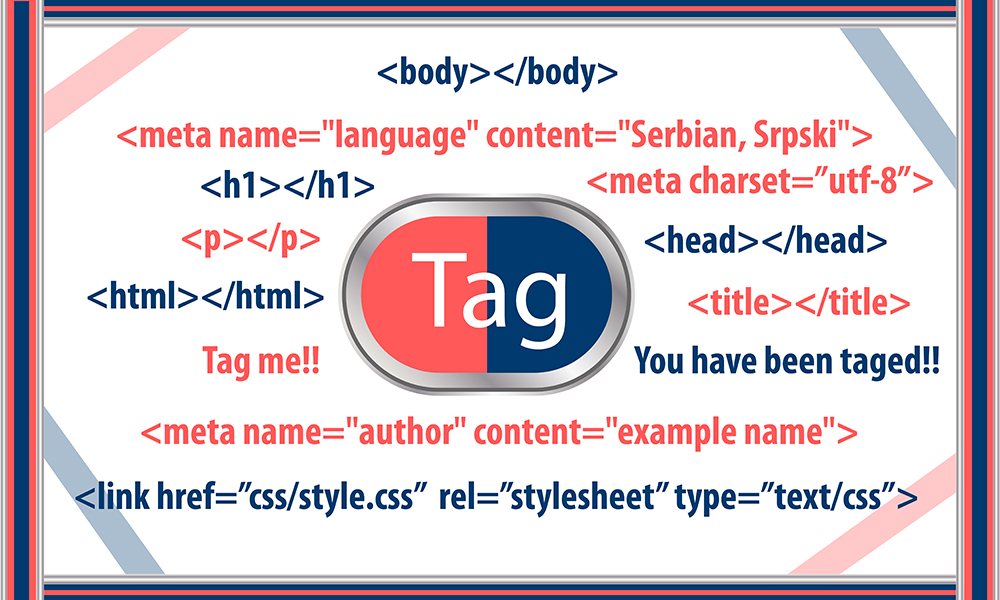
Term tag has many different meanings. Certainly, the most often mentioned tags are tags in web design and on social networks. In principle, the English term tag could be freely translated as a sign, label, or marking. The term tag in the Serbian language has almost become usual, so accordingly, term tagging appeared in the meaning of marking.
If someone, for example, puts a tag on the Facebook social network with your profile, it means that he has tagged you or published you in a post, or has invited you to the event he wants you to attend, or has marked your profile to be visible in some of his photos. It is precisely thanks to the placement of tags on this social network that the concept of tagging has emerged.
When it comes to the tag in the field of web design, it can be freely said that tags are keywords that describe a particular website and through which search engines rank a particular website in search.
The term tag in web design implies a specific command that refers to a browser, and "tells" it how to display a particular webpage, that is, web content. These are HTML commands that are written in the form of tags, but it does not matter whether the tag is written in uppercase or lowercase, although it is more common for the tags to be in lowercase. What is extremely important in order for a browser to recognize words or specific terms as tags is that they must be separated by commas. Communication with browsers is done through the HTML tags because they show the browser that a particular web page or document is actually an HTML document and that it should be so displayed during the search. Programming tags are always written within the "<" and ">" marks, and as such are always placed at the very beginning of HTML documents and necessarily at the end of a particular document. In this way, the final tag gives information to the browser that the starting tag of a particular HTML document is completed.
Tags in web design can be simple and complex, and in some situations, attributes serving to provide additional information on the page are used.
The most familiar is the so-called meta tag, which aims to provide information about the contents of a particular web page to the search engines and users. It is very important that all types of tags are set up in an adequate way so as not to have an effect opposite from the desired one. In no case should you include terms that are not related to a particular web page, as this can only reduce the number of site visitors and aggravate the ranking of a particular site in the search.
Meta tags and tags, in general, do not affect the appearance of a particular site but serve to give information primarily to browsers about the content of a website to include these terms in the search.
The tags that describe a particular site include a brief description of the content offered to visitors, and it is desirable that the description has no more than 150 characters. These tags provide information to browsers about what information is available on a particular site, and accordingly, browsers rank the site in search. It is recommended that every web page within a site contains this description, as this results in a better ranking of the site by the browser.
In addition to the meta tags, there are also keyword meta tags, which are an additional tool for improving the search. However, it is known that the Google search engine does not consider this type of rank enhancement tags for the time being, while the Bing browser includes this type of tags.